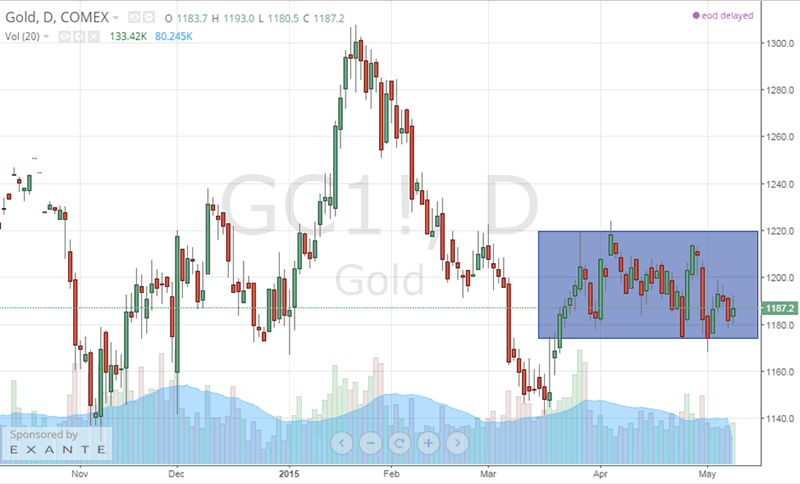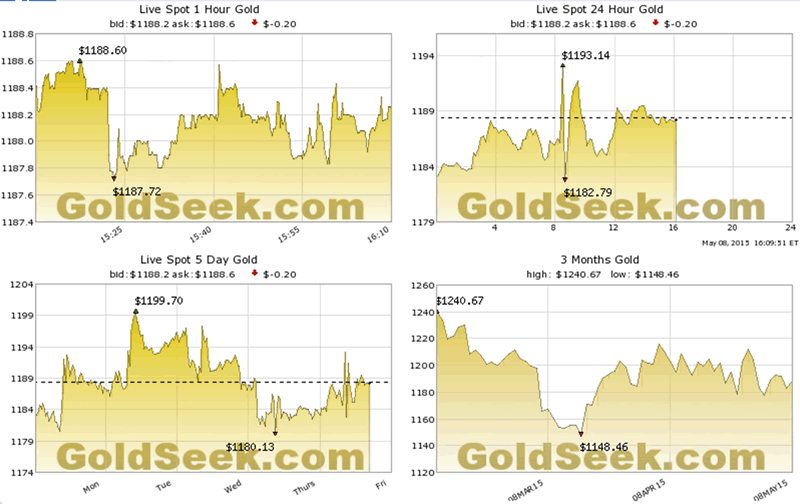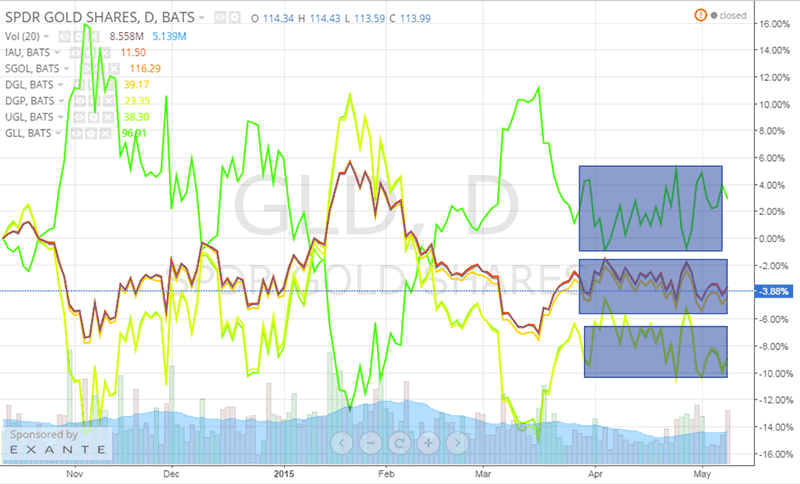Gold Price Remains Range-Bound Creating A Perfect Opportunity For Scalping
Commodities / Gold and Silver 2015 May 10, 2015 - 06:57 PM GMTBy: Submissions
 Nicholas Kitonyi writes: Over the last two months, the price of gold appears to have taken a sideways movement as it oscillated within the $1,175 and $1,220 price levels.
Nicholas Kitonyi writes: Over the last two months, the price of gold appears to have taken a sideways movement as it oscillated within the $1,175 and $1,220 price levels.
This is contrary to the movement witnessed from January to late March, when the price of the yellow metal recorded massive rallies and declines, at some point rising from about $1,165 an ounce to above the $1,300 level, before falling again to well below $1,150. There have been reports suggesting that gold could touch $1,300 again by May this year, but based on the current trend, that does not seem like it is going to happen any time soon.
The last time when the price of gold recorded a significant movement came between mid-March and late March, but since then it has been more or less a sideways movement.

So How Do You Trade Gold Now?
As illustrated, it is clear that the price of gold has remained range-bound between $1,175 and $1,220 in the last couple of months, which means taking a biased position (bullish or bearish), may not be the right move at the moment. The more reliable strategy right now could be scalping, as the price of the yellow metal remains volatile throughout trading sessions, and a better way to do this would be through CFD trading.
In recent trading sessions, the price of gold has demonstrated fluctuations indicative of perfect scalping opportunities, with price moving by as much as $5-$8 within a couple of hours during a trading session. This means that through CFD trading where trades are executed instantaneously and at lower costs of buying/shorting gold, traders can potentially profit on multiple occasions if they pick the right moves.

Based on the above four charts courtesy of GoldSeek.com, it is clear that the price range becomes more flat as the time periods widen. The first chart, which is a 1-hour chart demonstrates a volatile movement in the price of Gold, with the 24-chart showing a few cases of spikes.
The 5-day chart is also a little volatile, but when you look at the 3-month chart, it shows clearly how scalping on gold could have been used to turn in profits day after day, especially over the last two months. The good news is that, the current movement in the price of gold could continue to the near future.
So Why Scalping with CFDs
With CFD trading, traders do not just have an opportunity to trade Gold, as a metal/commodity, but they can also trade Gold in the various forms it is represented in the market including indices, ETFs and stocks. This means that traders can exercise their scalping strategies on multiple gold products in the market, and given the current volatility rates, this means that scalpers really stand a chance to make a lot from the yellow metal.
For instance looking at the top 20 Gold ETFs, the average volatility over the last few months has been about 0.5% up/down from the previous price on a daily basis, which again shows how sideways the market has been, thereby setting a perfect opportunity for scalping. This is confirmed by the fact that a majority of this ETFs have only managed to gain about 1% on average since the beginning of the year.
Now, trading these instruments as shares would be more costly than participating via the CFD market, where traders can actually buy shares on margin, without making huge deposits.
Technically, most of the gold ETFs have their support and resistance levels currently set at within $4.00 of each other. This also shows that the conditions are right for scalpers as the prices continue to move sideways in a tight tunnel.

From this illustration, it is possible to select no less than four Gold ETFs perfect for scalpers at the moment. However, the most interesting part is the fact that even the other three, have demonstrated tremendous volatility over the last few weeks.
Also, these are just but a few of several other Gold ETFs that investors could look out for in the CFDs markets, where they can then trade the movement of the price of the yellow metal in either direction without having to incur massive costs.
Conclusion
Some investors are sometimes unable to differentiate CFD trading from Forex trading due to the many similarities they share. However, there are a couple of differences that stand out, in this case, the most important one being the fact that with CFDs, traders can trade stocks, indices and ETFs, based on their actual market prices, while with Forex, stocks, Index and ETFs trading is not available.
The bottom line is that traders can trade gold on Forex markets and the futures markets, but given the current price movements, there is a huge opportunity for scalpers, especially in the CFDs market where there are several instruments tied to the price of gold, and are currently demonstrating similar characteristics to the that of gold.
By Nicholas Kitonyi
© 2015 Copyright Nicholas Kitonyi - All Rights Reserved
Disclaimer: The above is a matter of opinion provided for general information purposes only and is not intended as investment advice. Information and analysis above are derived from sources and utilising methods believed to be reliable, but we cannot accept responsibility for any losses you may incur as a result of this analysis. Individuals should consult with their personal financial advisors.
© 2005-2022 http://www.MarketOracle.co.uk - The Market Oracle is a FREE Daily Financial Markets Analysis & Forecasting online publication.



